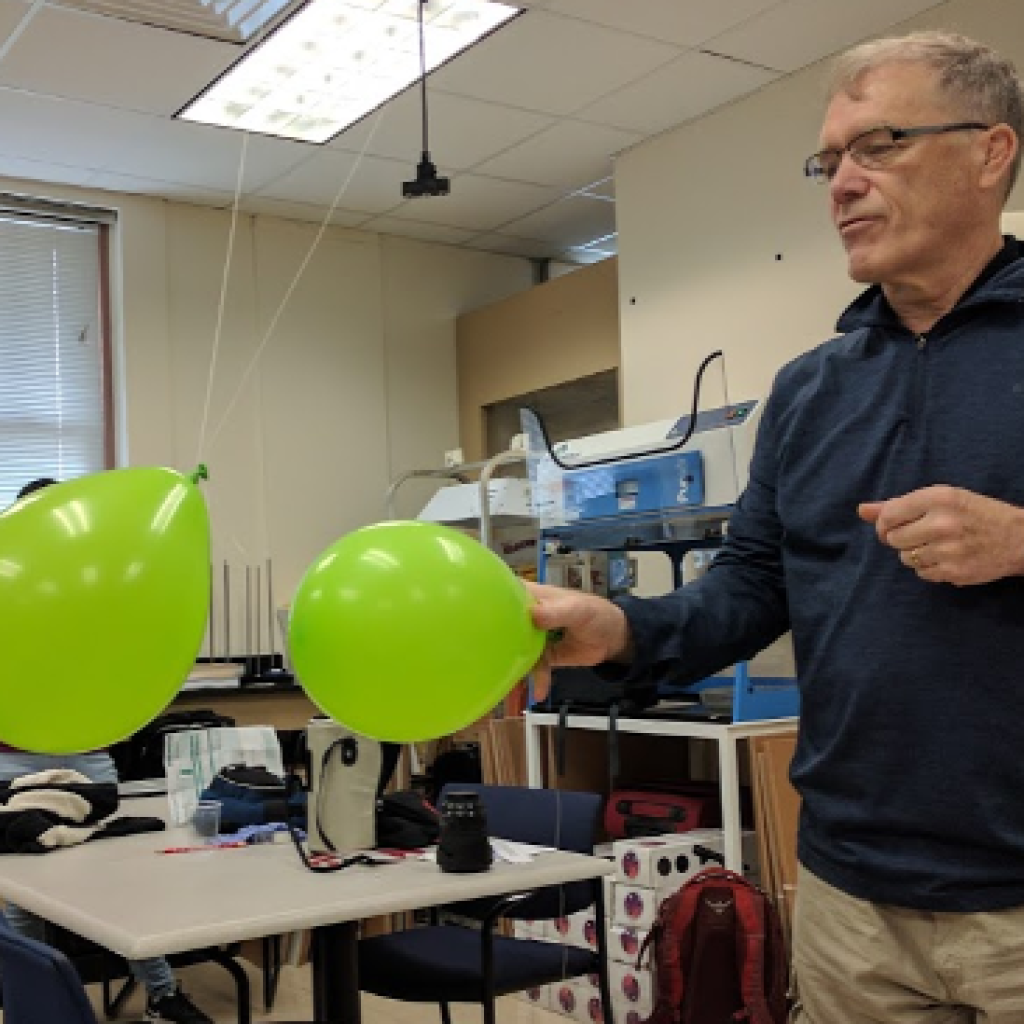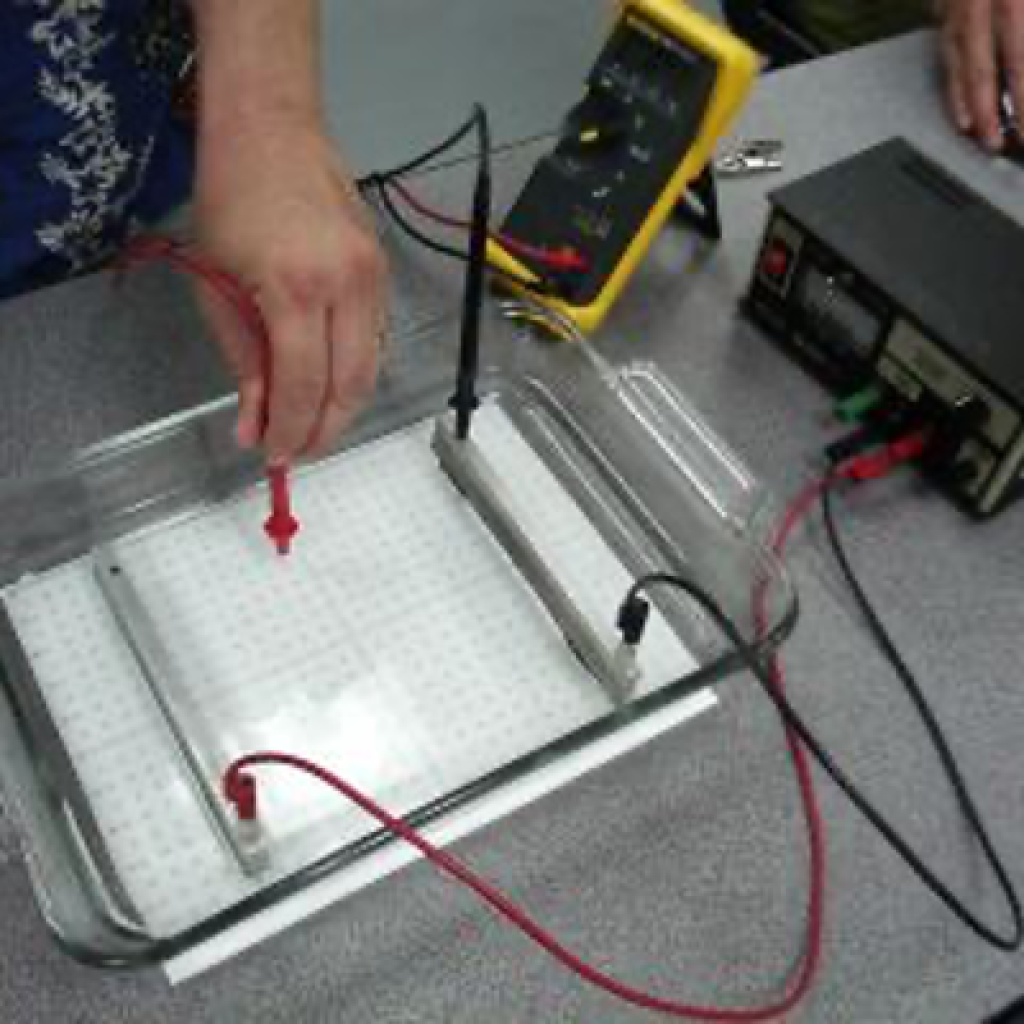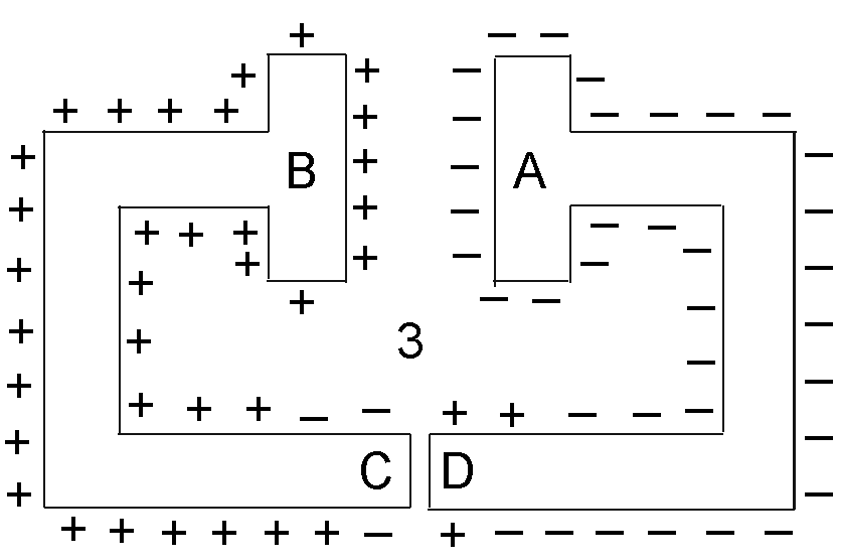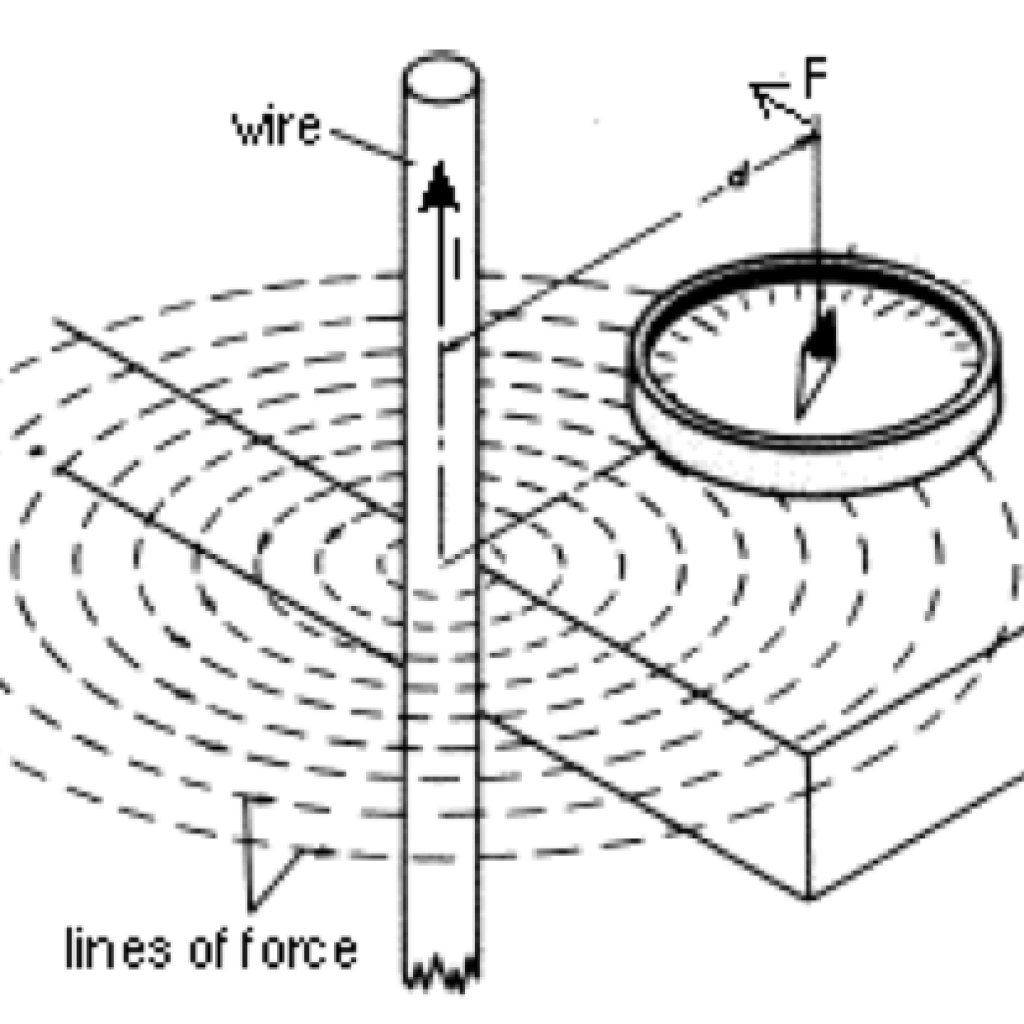Introduction
Modeling Instruction’s approach to E & M differs from traditional treatment in that it
- Develops models to account for observed phenomena
- Uses these models throughout the entire set of materials
Diagrammatic representations and causal mechanisms are stressed over quantitative problem-solving using a plug-n-chug approach.
Sequencing
Unit 1: Charge Behaviors and Interactions.
Charge produces and responds to an electric field.
The first unit in this set of materials begins with a simple demonstration: a balloon, after being rubbed by fur (or hair) sticks to the ceiling. This forces students to acknowledge a heretofore unstudied force: the electrical force. This segues into the first lab, Sticky Tape Activity, in which students use simple transparent tape as a tool to develop a model for electric charge. As a result of the activity, students:
- will discover that there is a property of objects that results in a force (other than gravitational) that is exerted without contact between the objects.
- learn that this force can be manifested as either attraction or repulsion.
- agree upon a charge convention to describe the objects.
- discover that the effect of attraction or repulsion is greatly dependent upon the distance between the objects.
- develop an intuitive understanding of conservation of charge.
- learn (or review) a model of the internal structure of the atom in which charge is a property of microscopic particles and is mobile to varying degrees in different materials.


Unit 2: Electric Potential
An electric field can store energy
In this unit, the interaction between particle and field is viewed primarily from an energy perspective. Specifically, changes in potential energy occur when particles are displaced along field lines. The size of the change in potential energy depends on three properties: a field property (strength), a “spatial” property (displacement parallel to field), and an intrinsic property of the particle (charge or mass). Parallels are drawn between gravitational and electric fields in four areas: force, field strength, potential energy and potential.
Unit 3: Circuits.
Energy stored in an electric field can cause bulk charge flow through conducting materials
Traditionally, circuits are treated as a separate case from electrostatics. When circuits are introduced, the somewhat elusive concept of “potential difference” becomes even more obscure and the meticulously developed concept of the electric field is abandoned altogether. Students are left memorizing several “rules” (Kirchoff’s laws, Ohm’s law) with little comprehension of the underlying physics. Vague thoughts of “voltage” as some kind of “pressure” may be introduced, which not only confuses the cause of charge motion with its effect, but is also utterly disconnected to prior treatments of electrical potential.
This unit is an attempt to strongly bridge circuits with electrostatics. Starting with the ideas (developed in Unit 2) that a separation of charge (the presence of a net + or – charge) results in an electric field and, in response to this field, mobile charge carriers move, students develop a more consistent model of circuits. In a circuit, the battery (or other emf source) does work to maintain a charge separation, and thus creates an electric field within the conducting elements (“conductors” or wires, and resistors).


Unit 4 – Magnetism
Charge flow produces and responds to a new type of field.
Traditionally, the magnetic field is treated as a thing that exists in the vicinity of a permanent magnet. Fields are shown using iron filings scattered over bar and horseshoe magnets. It is observed that a current-carrying wire in the vicinity of a magnet experiences a force. A quantitative treatment of the force shows its dependency on magnetic field strength, current, and length of wire. The right-hand curl rule and right-hand “cross product” rule are developed and applied. Electromagnetic induction, Faraday’s law, motors and generators then follow as topics.
This unit, while containing “traditional” activities, re-envisions the treatment of magnetic fields to smooth its articulation with the E&M units that precede it, as well as to tackle potential points of student confusion head on. For example, student confusion of the electric and magnetic fields gets sorted out from the outset, so that when they later encounter the magnetic field surrounding a bar magnet, they are not as tempted to think it as the same field that surrounds an electric dipole.
Sample Materials
Follow this link for sample materials from E & M Unit 2 – Electric Potential. Note that this sample unit does NOT contain any quizzes or tests, and addresses the following objectives for students:
By the time you finish all labs, worksheets and related activities, you should be able to:
- Draw parallels between gravitational and electrical: force, field, energy & potential.
- Write formulas for each expression.
- Solve for units for each quantity.
- Map equipotential lines, explain their significance in terms of the field.
- Use the volt as the unit of electric potential; use two different equations for potential.
- Explain how a capacitor works.
- Relate capacitance to plate area and separation.
- Relate energy storage by a capacitor to charge and potential
- Use relationships among potential, field, charge and energy to solve for missing quantities.
Interested in a Physics: Electricity & Magnetism Workshop?
Workshops are offered each summer in a variety of locations. Check back often as workshops are always being added.
First-time attendees qualify for a free one-year membership to AMTA. Members have access to ALL instructional resources, webinars, distance learning courses, and other membership services!
If you would like to host a workshop contact: engage@modelinginstruction.org
